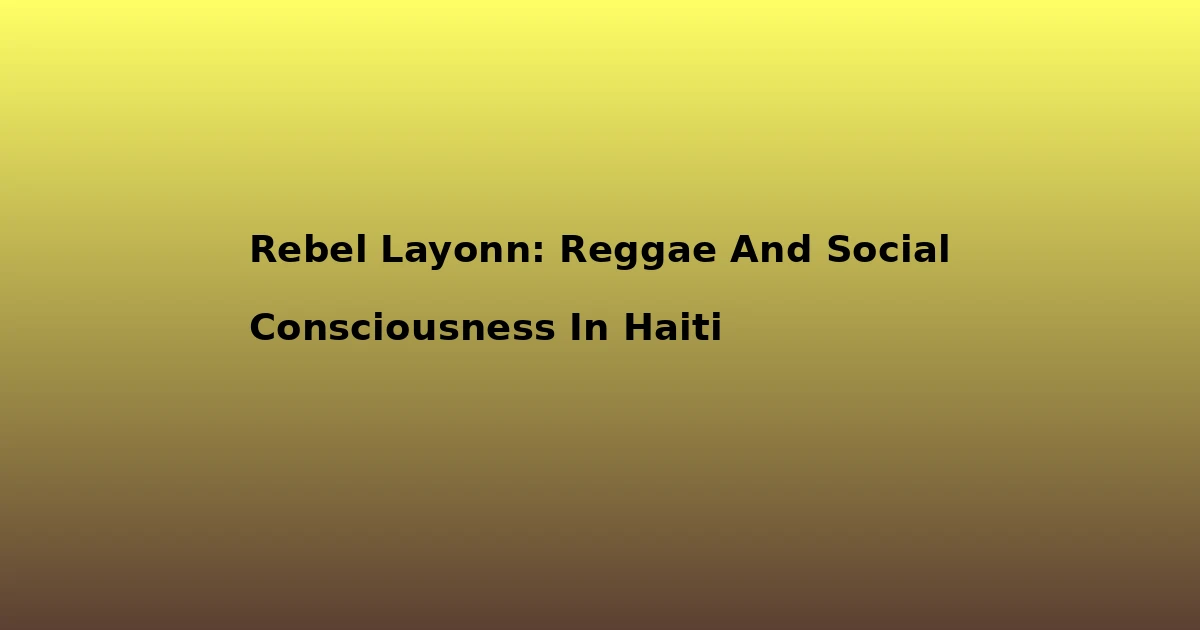Stephanie Villedrouin Balmir is like most typical married mothers of two, except that she has a special responsibility, the revival of Haiti’s tourism industry. As the country’s Minister of Tourism, Villedrouin Balmir’s agenda is almost always booked.
She makes trips abroad to tourism conferences and expos. Every other day it seems, she’s attending ribbon-cutting ceremonies of new hotels, as in the launch of Royal Oasis in the city of Petionville, and the inauguration of a welcoming office in Choiseul (a little town based in the North of Haiti).
Villedrouin Balmir oversaw the opening of Haiti’s Hospitality School.
And then there are the countless contract signing sessions and partnerships, one of the most recent and most significant being a partnership with Transat, a Canadian-based travel and vacation package firm, and another with Venezuela for developing Ile-a-Vache, an islet whose beauty and further potential has long been recognized by visitors.
To many observers, Villedrouin Balmir is regarded as one of the most visible figure of Haiti’s different Ministries, and the one who makes the most use of social media and the internet to propagate her activities, events, her milestones and plans.
The Ministry has multiple accounts on social media networks, one of the most active being its Twitter accounts. It also has a newsletter that website visitors Clearly this is the first time that some feel that they have a sort of grasp on the inner workings of one of Haiti’s Ministries.
Through the Tourism Ministry’s endless updates on social media networks, web users and subscribers feel as if they’re actually part of a movement, a movement that they have a stake in. One of its most effective use of social media was the launch of a contest for the logo and the tag line for tourism.
The contest went viral online and attracted participants from all over.
Whether some approved of the winning logo and slogan mattered not. The Tourism Ministry accomplished something greater: it attracted new followers, the contest yielded much discussion, and awareness about the work Villedrouin was overtaking. In short, engagement of Haitians in Haiti and those living abroad, not to mention non-Haitians whose images of the country were far from positive.
The Minister is constantly on the go. When it’s not small group discussions with her team, it’s meetings and summits with at tourism and travel conventions. Her fluency in French, English, Spanish and Creole surely come in handy.
One minute, she’s in Mexico in negotiation with Fonotur, and afterwards meeting with the head tourism in Ecuador. The next minute she’s on a plane to Miami to meet with Haitian media and local movers and shakers to launch the new publicity spots for Haiti’s aggressive tourism campaign.
One of the principles taught in marketing books is the importance of taking advantage of every opportunity that presents itself. And that Villedrouin Balmir does, going as far as attending a well-publicized soccer match to meet and greet others, and to have her team walking the grounds with a newly-minted Transat brochure and This is Haiti T-shirts.
She says she understands that part of her mission is to not to just accomplish tourism objectives during her tenure, but to put some structure and plenty of partnerships in place that will ease tourism in decades to come.
As Haiti’s Tourism Ministry initially undertook the job of rebranding the country, it was met with a lot of cynicism and reactions. Reactions like, “Haiti doesn’t even have decent roads. There’s trash and tents all over Port-au-Prince.
Shouldn’t that be priority?” And then there is the continued concern about environmental issues that might stem from developing Haiti. What price, Tourism?
Villedrouin Balmir would rather turn her attention and concentration on the milestones she and her team have reached. Haiti’s destinations are being advertised on Billboards in Miami and on public buses in , when a few years ago, a mention of Haiti in such spots would probably be in connection to earthquake donations.
Individuals of Haitian descent who only occasionally visit Haiti are creating companies to get a share of the country’s re-budding tourism industry, while foreign investors are that make use of Haiti’s mountainous landscape. Huge companies like Best Western and Occidental Hotels are investing and financial clout-soaked countries like Qatar are talking investment.
Several favorable articles have appeared in major newspapers, such as the New York Times. Haiti’s changing image has even warranted a tourist guide, the first in nearly two decades.
While the Minister is very much conscious of her accomplishments, she’s always looking for new ways and new avenues to push her tourism agenda.
Q & A
You were born in Venezuela of Haitian parents.
My father was a diplomat and he was [the] Haitian’s Ambassador in Venezuela when I was born. So this is the explanation, but I’m Haitian, as my parents are both Haitians.
What’s a typical day like for you as Haiti’s Minister of Tourism?
If I’m not traveling, I arrive to the Ministry’s offices around 8 a.m. and to review the agenda with my Chef of Cabinet, sign documents, review the correspondence, the news… Drinking my Haitian coffee, of course.
Later, I meet with some staff as director and advisers to review the main projects.
And I have some meetings during the day with other members of the government, or private sector representatives. I also visit one region of the country each week to supervise the projects that we are developing and I have to attend on Wednesdays the Governmental Cabinet Council. I am used to coming home at 8 p.m.—if I don’t have any professional appointment to dinner or to attend receptions or meetings. In fact, my day never ends.
Can you trace the steps of how you got to where you are today?
I think the two principal factors [that] explain how I got [this position within] the Haitian government are my commitment for this country and my passion for the tourism sector.
When the Prime Minister asked me to be Tourism Minister, I didn’t doubt, I said yes! This is the best way to help my country to recover from the natural disaster and reposition Haiti as the tourism destiny in the Caribbean.
You’re definitely a career woman. What have you learned about being a leader, and about leadership itself?
I have learned that this is a very difficult task! [Laughter] Seriously, the main lesson I’ve learned is to listen to the people.
To listen to my team, to listen to the private sector, to listen to the trainers, the masters, the technicians… I make decisions every minute and the team moves forward.
I noticed that in your display poster, you have a photo of Labadie on there, and stuff. I had read that Labadie is now part of—it was either sold to an American company or it was leased?
It was—it’s leased. It’s still leased.
So it’s not sold?
No, it’s not. It’s leased. It’s leased to Royal Caribbean, which is a big cruise ship [company].
We receive 600,000 excursionists per year, at Labadee. And we’re working now on attracting them out of Labadee for the day, to go to the Citadel.
Actually, I inaugurated with the president the different structures in Choiseul, which is where you take the horses to go up to the Citadel. We have toilets. We have a snack bar.
We have the carts for the artisans. It’s part of our work to attract visitors to visit the Citadel.
How long is the lease for? Until what year?
I don’t have that answer now, unfortunately.
When the lease is over, will Haiti’s tourism department take over?
Yes, of course. Like all the other areas where we have beaches. You have to understand that Royal Caribbean is an investor.
Royal Caribbean invested more than 50 million already on the site. The site is completely built.
Sometimes, they have more than 6,000 tourists in the area. It’s the same concept as Club Med. They had also a very nice beach.
They had built hotels and a restaurant area. That’s exactly what Royal Caribbean did, but without the rooms. They built attractions.
They have a lot of activities for their clients. So definitely, they’re a very good investor for Haiti. And the idea, of course, is to receive more boats per day. And we’re working with them in order to do so.
The upcoming carnival that you guys have, what are your plans for it?
We have the Carnival of Flowers during the summer—at the end of July. Of course, it’s about our environment, because the president declared it the Year of the Environment. So, we’re going to be showcasing our flowers and also the animals. So, it’s going to be a very artistic show—at the end of July.
Now, for February 2014—that Carnival–is it really true that it’s going to take place in another city in Haiti?
It will take place in another city. The last word, the President has it.
The word is that it’s going to take place in Gonaives. Is that true.
There is word about Gonaives, but, um, he has the final decision about it.
So, from now on—every year, it’s going to be in another city?
I cannot address it. I don’t know yet.
In terms of all your accomplishments towards building a tourism program for Haiti, which are you most proud of?
It’s early to say… I thing we are laying the foundation to build an industry with a future and it takes time.
If I have to specify, I would say the new terminal of the Airport and the reopening of our School of Hospitality, because the old one fell down in 2010.
The training of young Haitian in tourism and hospitality is one of the foundations of my plan during this legislature. And I hope to present my Master Plan very soon, the most important tool to develop tourism in Haiti in the next years.
Above: Villedrouin Balmir at a ribbon cutting ceremony with Haiti’s Prime Minister Salvador Laurent Lamothe (left), Haiti’s prez Joseph Michel Martelly (center).
What’s your favorite place to visit in Haiti?
It’s impossible to say only one. One of the characteristics of Haiti is its diversity of landscapes and its amazing heritage.
For example, I could say the world heritage Citadelle in the North, the biggest fortress of the Americas or I could say Jacmel, Île-à-Vache or Port-Salut in the South, with amazing culture and beaches.
But I could say too—our waterfalls, like Saut d’Eau, Saut Mathurine or the natural swimming pools Bassin Bleu, the resorts of Côtes des Arcadins or our majestic mountains… It’s impossible to choose only one place.
https://www.youtube.com/watch?v=yxTHI4B2Wqo
[Special thanks to Maite Perea for making this interview possible. Photo Credit: All photos are courtesy of Haiti’s Tourism Ministry]
Stay connected with the latest developments about Haiti’s tourism from its Ministry on , and on its .
Last Updated on December 2, 2025 by kreyolicious



